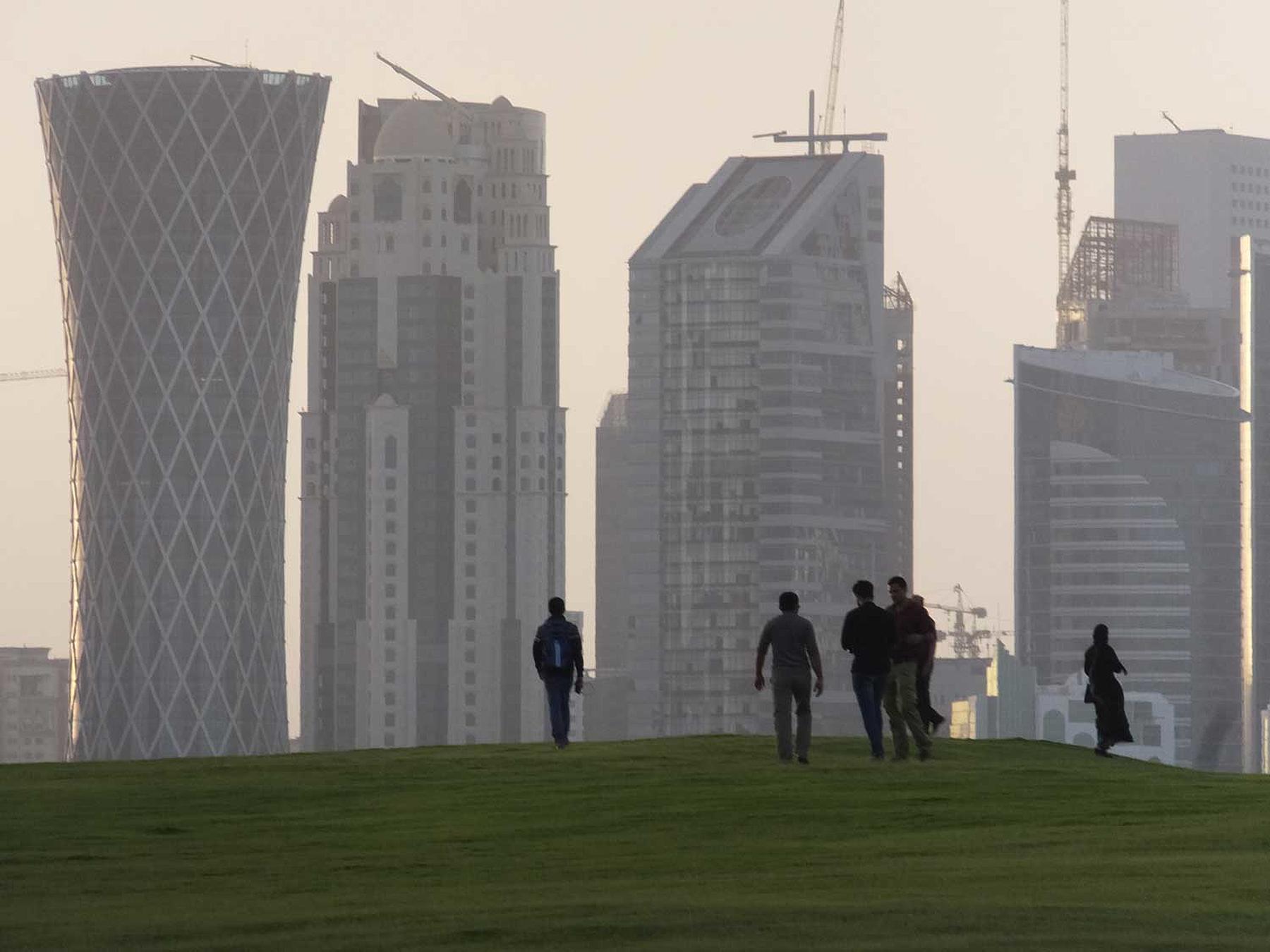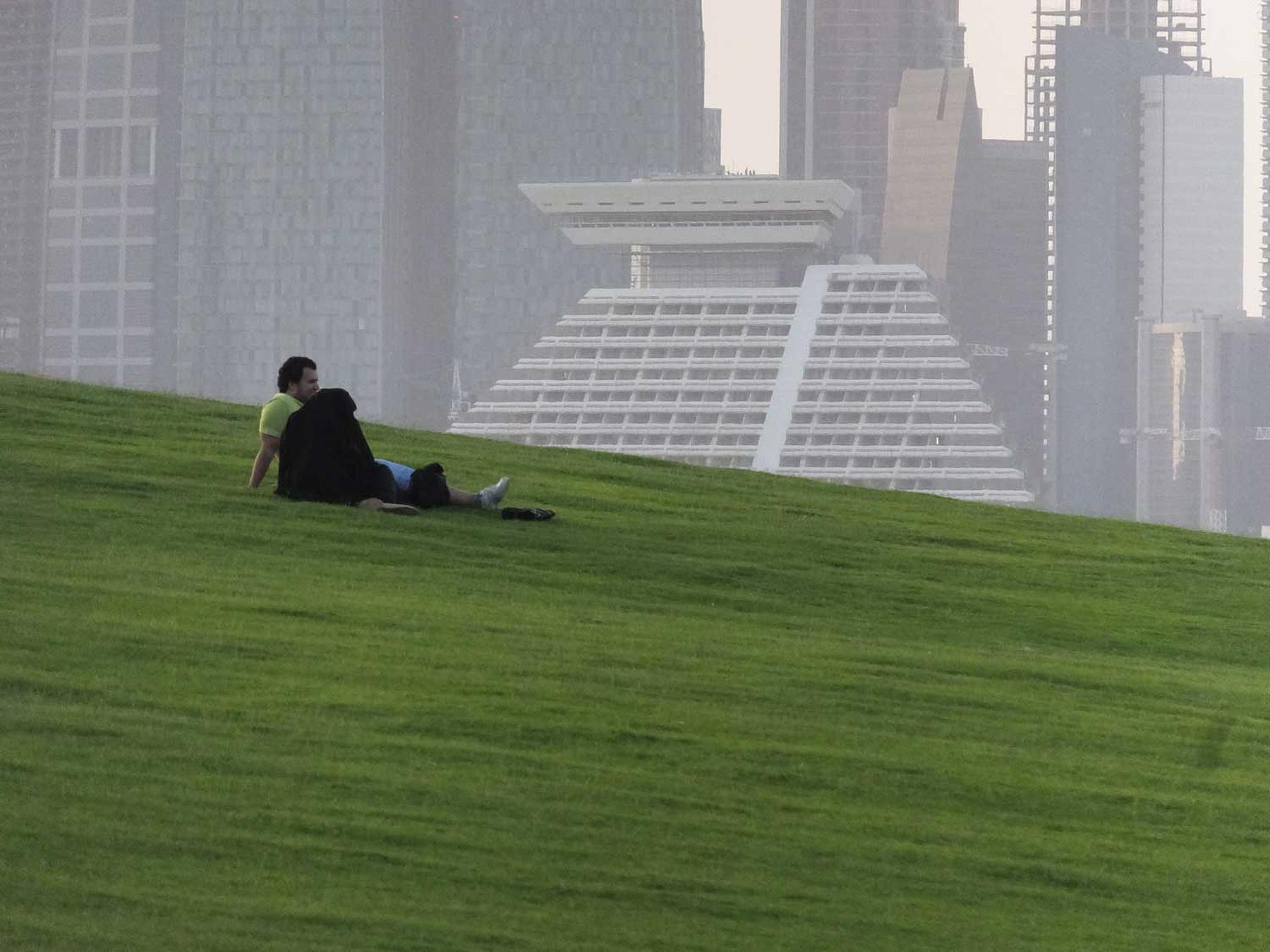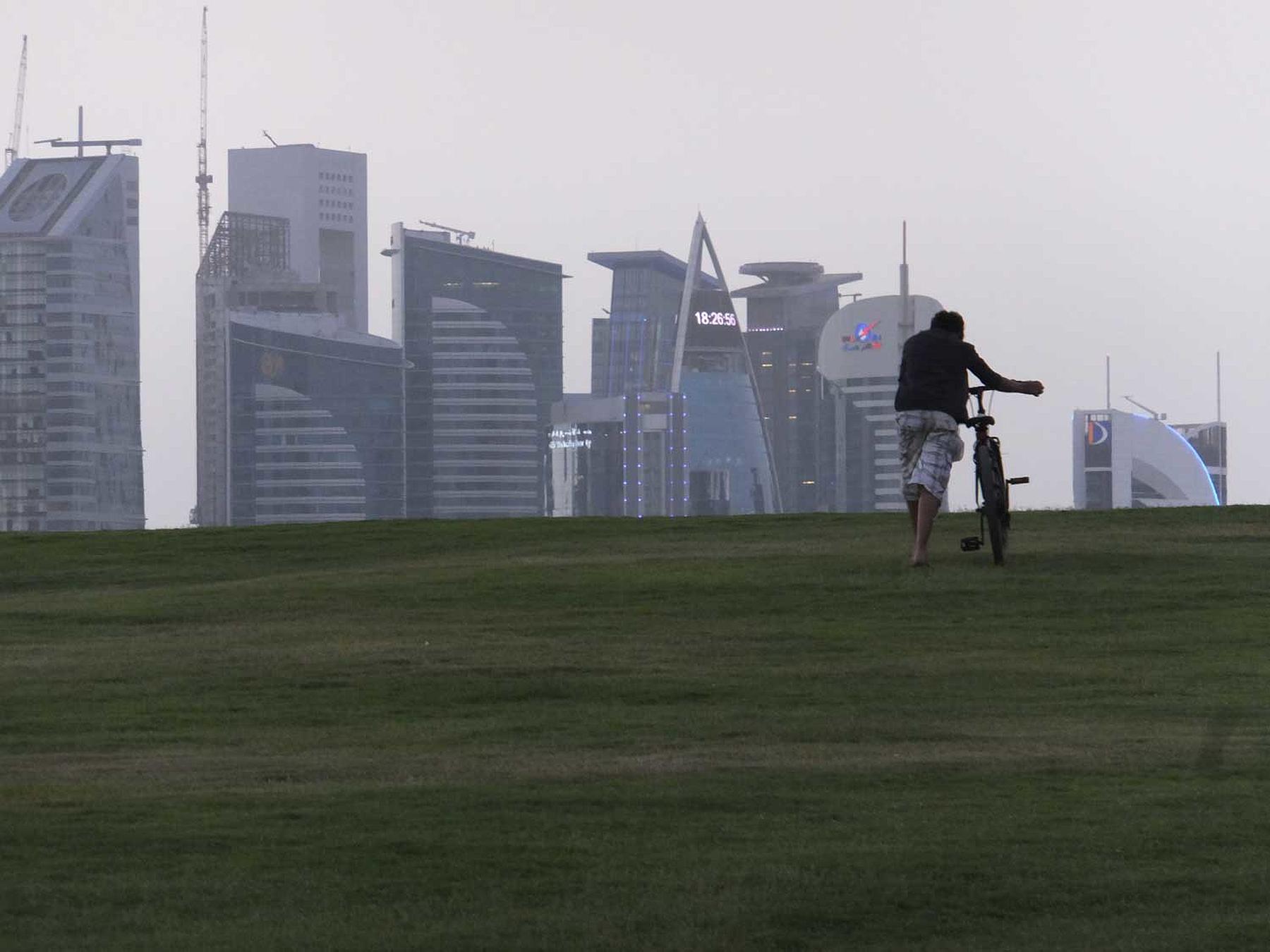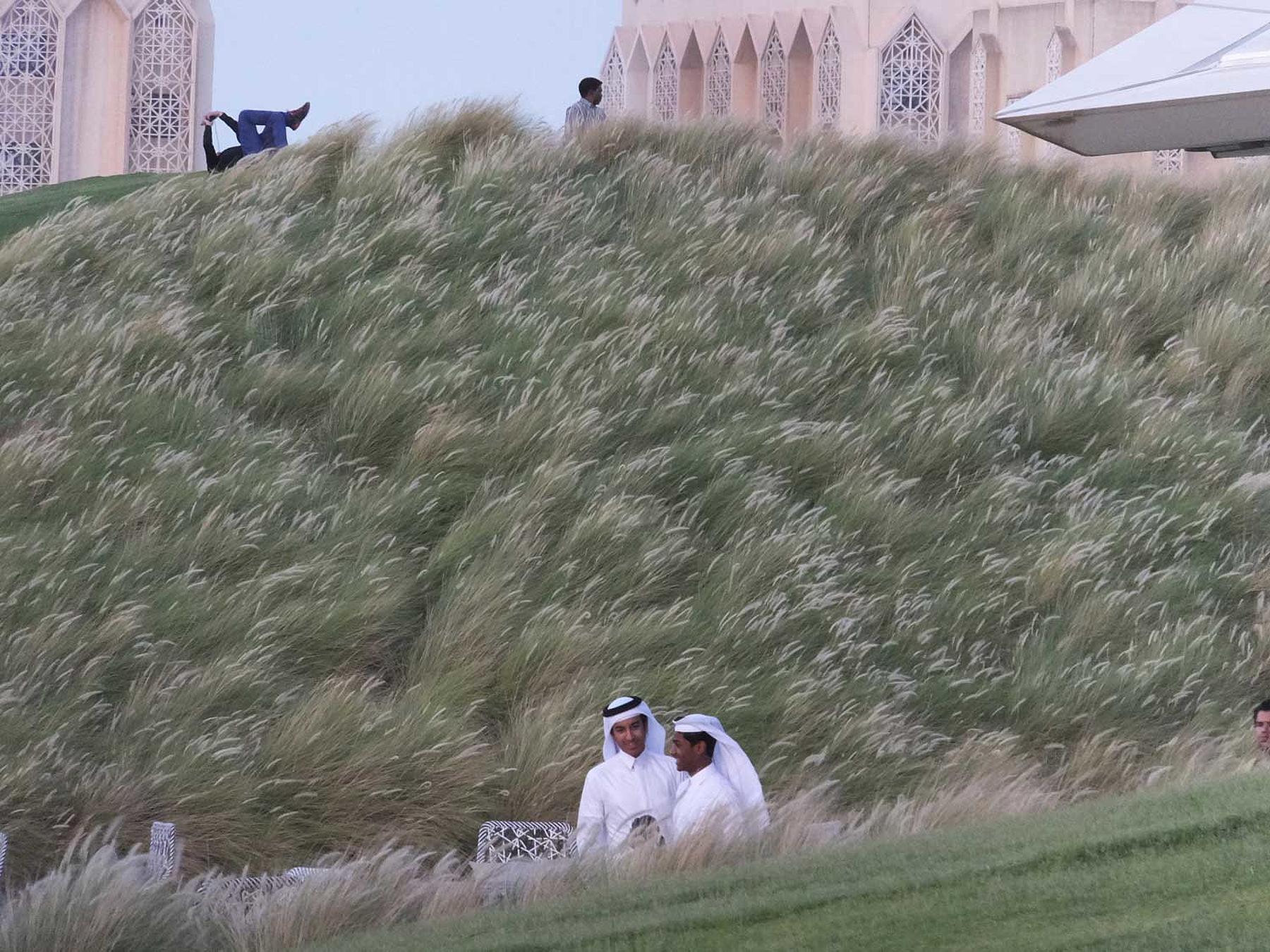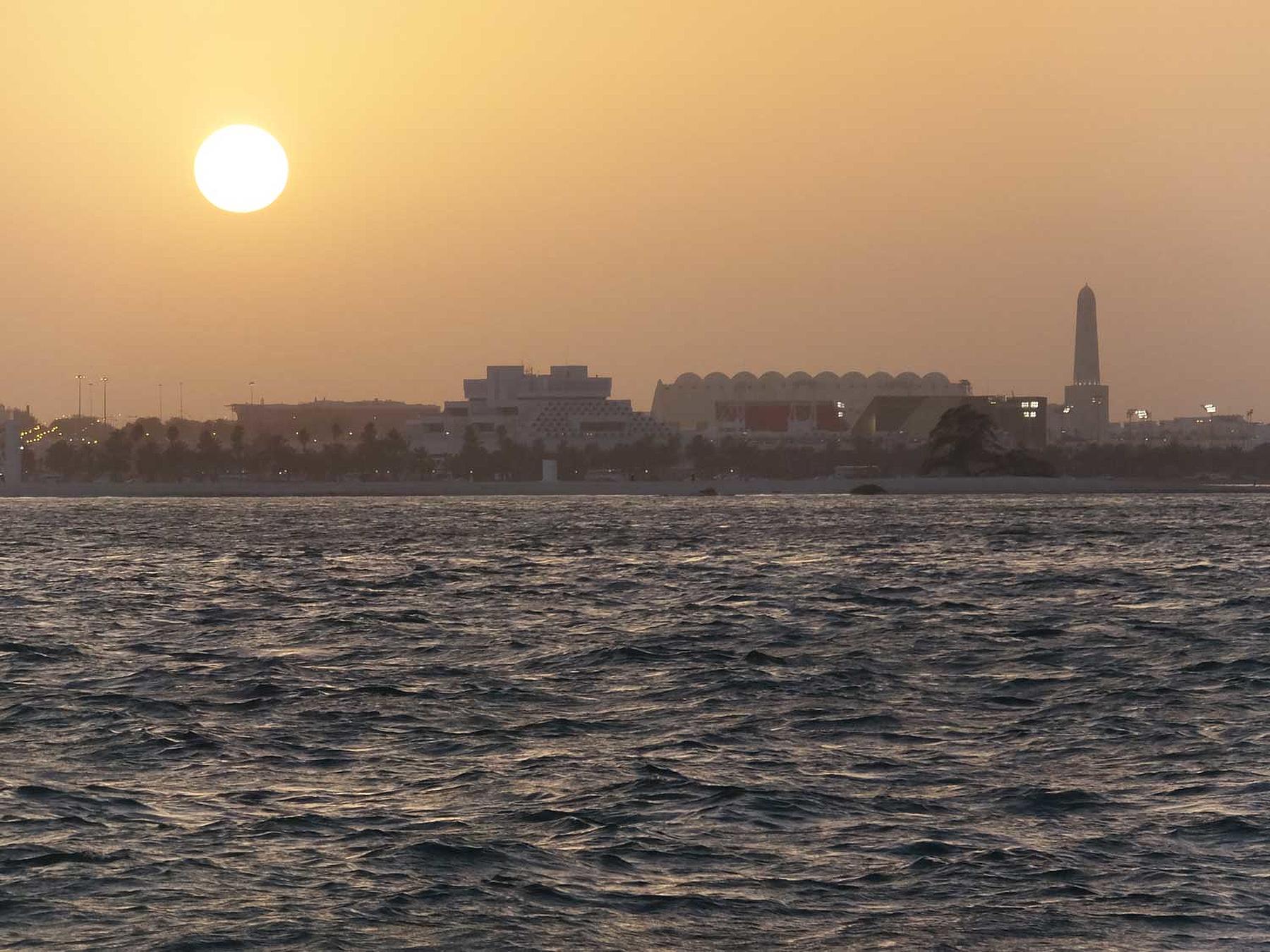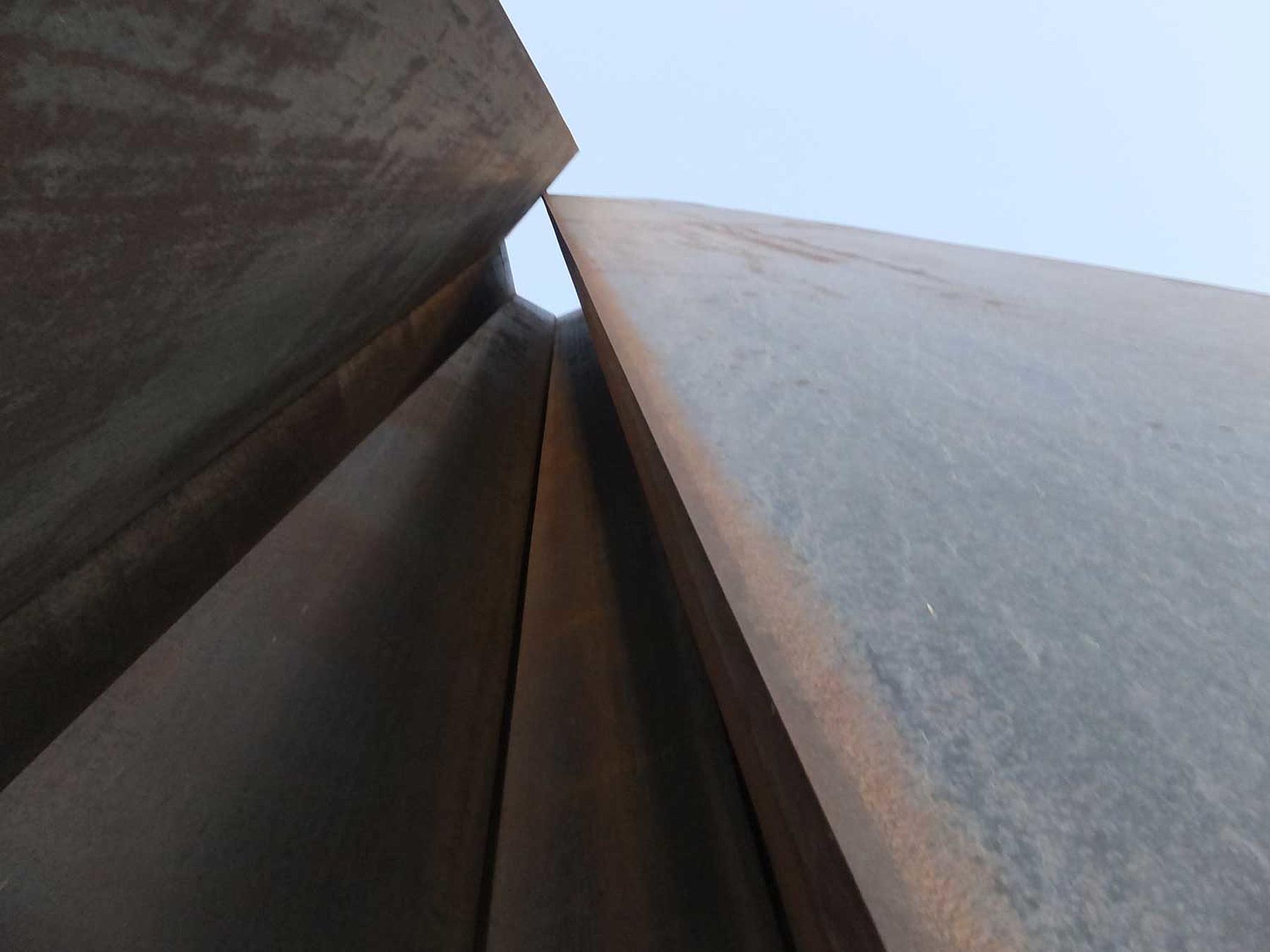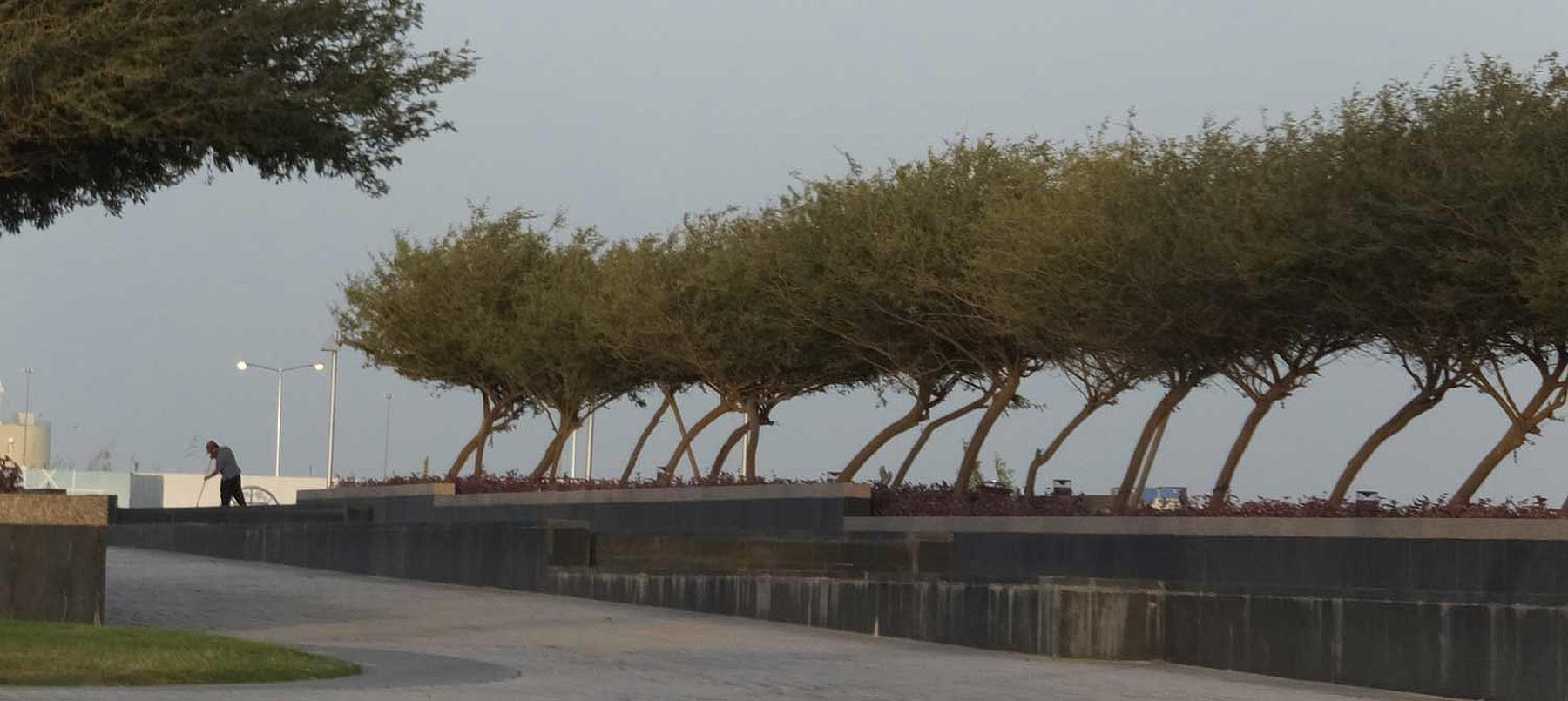Seven By Seven
I am pushing against the wind to enter the Park. I leap the fence and suddenly everything is alive; the leaves and grasses bend under the force of the wind and shimmer in restless animation.
I have lapsed lately in Thinking Quietly, so let this be my revival. Having been obsessed with the number 7 since the moment I could count, it is a good number to be. Full of imminence.
Why do I like 7 ? Is it the seven days of Creation, or the days of the week, the number of levels in Heaven and Earth according to Islam or the number of celestial objects in the solar system visible to the naked eye from Earth ? I don’t know, I think it’s just a satisfying number; neither a beginning nor an end. Seven is on its way somewhere; part of something bigger than itself.
At the far end of the MIA Park, buffeted by the wind is ‘7’, Richard Serra’s tower of seven steel plates located at the tip of Doha’s baby Corniche; this is somewhere I have not been since the sculpture was installed.
Seen from afar ‘7’ never seems big enough; viewed across the Bay, dwarfed by the great museum, because it is so far away, it seems less significant than it really is. It is prevented from interaction by mere distance. The Bay is like Doha’s ‘lens’; magnifying the grand structures which surround it and bringing them closer, but not in the case of ‘7’. Up close it is very large; but is it large enough ?
I arrive at the ‘baby Corniche’, like the child’s arm held in embrace, arm in arm with the mother, and look across the roughened water, planished by the incessant wind, making a surface like beaten metal. The slightly leaning form of ‘7’ becomes a flattened shape with the towers of West Bay beyond, distinguished now by its darkness of tone rather than by height; two layers simply glued together.
I want to reach over the water and touch ‘7’, or fly across the baby-bay like a sea-bird, but instead I will walk round the encircling curve, leaning into the wind.
On my way, I am drawn to climb the green hills, cushiony under foot, velvety to touch; a false horizon, truncating forms; and an irresistible vantage point for the quiet few who are out there with me.
The Sun is going down behind the Grand Mosque. The tipping light, from day to night, softens everything; makes it quieter even, inspite of the raging wind.
I look behind me and there to my surprise is the full Moon rising. Sun falls, Moon brightens, Earth spins.
Turning back to ‘7’, and looking beyond it to the city, there is the National Archive, its mottled surface beginning to glow in the dusk light, there is the Islamic Museum beginning to show its age – silicon joints failing – and our own new office (a new home for the next year). It is a time of beginning; the next in a cycle of sevens.
On arriving at ‘7’, this tower of rusted steel seems rather self-contained. I cannot hear it speaking, or singing in the wind. The little man guarding it is comfortable though; sheltered between two of its plates. He brings it to life. Maybe he is there to show its scale.
The patina and thickness of the steel is indeed magnificent. Its warmth to touch is pleasing. Looking up, the way the plates lean against each other is good, although I wonder about its junction with the ground. I move on.
‘7’ ignores the directional forces of the place, something which the trees, shaped by the prevailing Northwest wind, do not. On my way back, a man leans windwards to continue sweeping, until his day’s work ends and he, like me, can go home.
Embracing curve.
Two layers flattened.
Space magnified and compressed.
Forms leaning.
Place to go.
The Wind.
The Sun.
The Moon.
Leaning.

